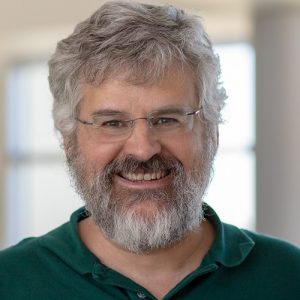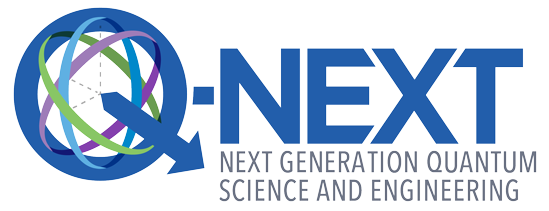by Kent Irwin

We have a unique opportunity in quantum sensing because of Q-NEXT. This opportunity is presented by a combination of recent breakthroughs in our ability to control and manipulate quantum states, combined with Q-NEXT’s investment in infrastructure and projects to use entanglement in systems.
As we enter Q-NEXT’s second year, the Quantum Sensing (QS) Thrust is ramping up plans to leverage entanglement and squeezing for advantages at new frontiers of sensitivity, length scale and frequency scale.
The QS Thrust is pioneering quantum sensing in four focus areas:
Superconducting single-photon detection: the development of sensors with single-photon resolution for repeater-based quantum communication and other applications.
Quantum measurement protocols: the development and realization of algorithms and protocols for sensing that capitalize on innovations from the quantum-information community.
Quantum sensing at new length scales: Atomic-scale systems (atoms and solid state) can image down to nanometer scale and integrate into large-scale photonic networks.
Quantum sensing at new frequency scales: Coherent manipulation of signals including squeezing and entanglement over 12 orders of magnitude of frequency.
While there have been breakthroughs in quantum sensing over the last years, they have often been isolated to certain length scales and certain islands in frequency space (including microwave and optical circuit frequencies). Q-NEXT stands poised to capitalize on its investment by broadening and extending the impact of quantum sensing.
Over the past year, the groups in the QS Thrust have been preparing and ramping up their efforts. Headway has been made in entangling clocks, increasing the continuous count rate of single-photon detection, coherent manipulation of electromagnetic signals below microwave frequencies, understanding decoherence in NV centers, and entanglement and squeezing in atom interferometers and cold molecules, to name a few areas.
The QS Thrust’s goals will be achieved in large part through the use of the two quantum foundries at Argonne and SLAC for the manufacture of advanced quantum sensing system components. Also critical will be connections to the Extreme-Scale Characterization and Materials & Integration thrusts for development and characterization of needed devices and materials. Collaboration with the Quantum Simulations & Systems Thrust is needed for the development and implementation of quantum measurement protocols, and with the Communication Thrust especially in the area of single-photon detection.
We are just getting started, and as we coordinate our university, national laboratory, and industrial partners, the opportunities are exciting. We look forward to the next year of working with the Q-NEXT community.
Kent Irwin of Stanford University leads the Q-NEXT Quantum Sensing Thrust.
This work was supported by the DOE Office of Science National Quantum Information Science Research Centers.
